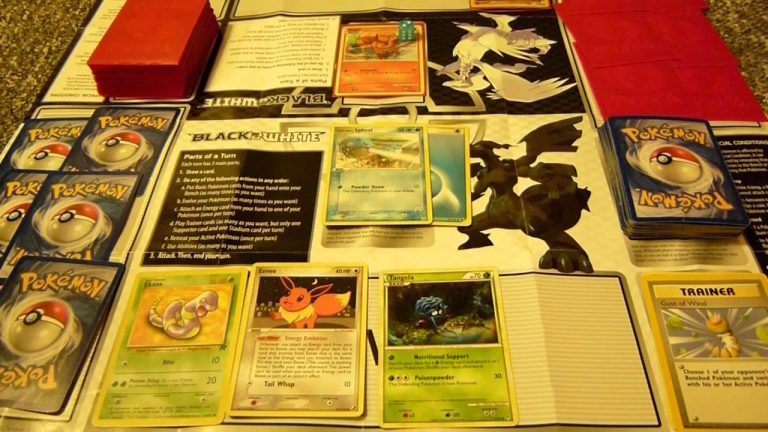
Whether you’re just learning to play Pokemon for the first time, rediscovered the franchise through recent video games, or are an old-school collector, there’s something about holding a card in your hand that brings a rush of nostalgia.
These collectibles also make great investments. Many of the first-edition cards have appreciated in value, thanks to their limited supply and high demand.
What is a Pokemon card?
Pokemon has become an international phenomenon with TV shows, movies, stuffed animals and the wildly popular trading card game. Players assemble a deck of 60 cards and then compete by taking turns using attacks and abilities to knock out their opponent’s Pokemon.
A Pokemon card will have its name, hit points (or HP) and special condition. The hit points will have a plus (+) or minus (-) sign to indicate the amount of damage the Pokemon can take before being knocked out. The special conditions are Asleep, Burned, Confused and Paralyzed, with the Pokemon being turned upside down to show its status.
The Pokemon card will also have its resistance and retreat cost, with resistance denoting the types of Pokemon it receives less damage from, and retreat cost showing how much the defending Pokemon must pay to return to its active player’s bench.
How do I know if a card is rare?
The Pokemon trading cards Game is built around trading cards, so knowing how rare a card is can help you avoid getting ripped off when buying or selling them. To check the rarity of a card, look for a circle, diamond, or star. Circles and diamonds indicate Common or Uncommon cards, respectively. Stars indicate rare cards, while H or three stars indicate special, extra-rare cards that are often valuable.
The Pokemon Company advertises how many Common, Uncommon, and Rare cards are in each booster pack of a given set, but anecdotal data and our own experience opening thousands of packs suggest that higher rarity cards can be much scarcer than advertised. For example, a holofoil Rare in a limited edition print run may fetch $500 or more in near mint condition.
How do I know if a card is holo?
Most collectors look for holo cards, which are shiny and reflective. They also tend to have a higher value than non-holo cards.
The Pokemon Company doesn’t always reveal how many rares, uncommons, and commons are in a booster pack, so the only way to know for sure is to open it. However, anecdotal evidence shows that cards with higher rarities are much harder to find in real life than those of lower rarities.
For cards that are not holo, it’s easiest to identify them by their foil. If a card has no foil, it’s likely a Common or Uncommon. If it has only a gold holofoil logo for the Pokémon name, HP, and rarity symbol, it’s a Reverse Holo. Cards of higher rarities such as GXes and Legends have gold holo text all over them.
How do I know if a card is good?
Many childhood collectors want to turn their cards into cash, but a few small flaws can really hurt the value. Condition is a major factor when it comes to selling Pokemon cards, and even seemingly minor issues like fading can drastically lower a card’s score with grading companies like PSA.
Also, note the small symbols on a card – a circle indicates a common card, a diamond marks an uncommon card, and a star (or any of a variety of unique symbols) marks a rare card. These rare Pokemon cards can be worth quite a bit of money!
Another thing to keep in mind is that holographic cards can be more valuable than their non-holo counterparts. So, if you have any holographic cards, make sure to check out their value with a price-checking website!
How do I know if a card is good for me?
There are a few things that you should look for to know whether or not your card is worth much. For one, pay attention to the date; older cards are often more valuable than newer ones. Also, look at the edges and corners of the card to see if there is any wear. If there is, this is called whitening and will greatly devalue the card.
Another thing to consider is getting your cards graded. This is done by professional grading companies and involves putting the cards under a microscope to look for scratches, stains, and other imperfections. It is a bit expensive, but it can make your cards much more valuable.